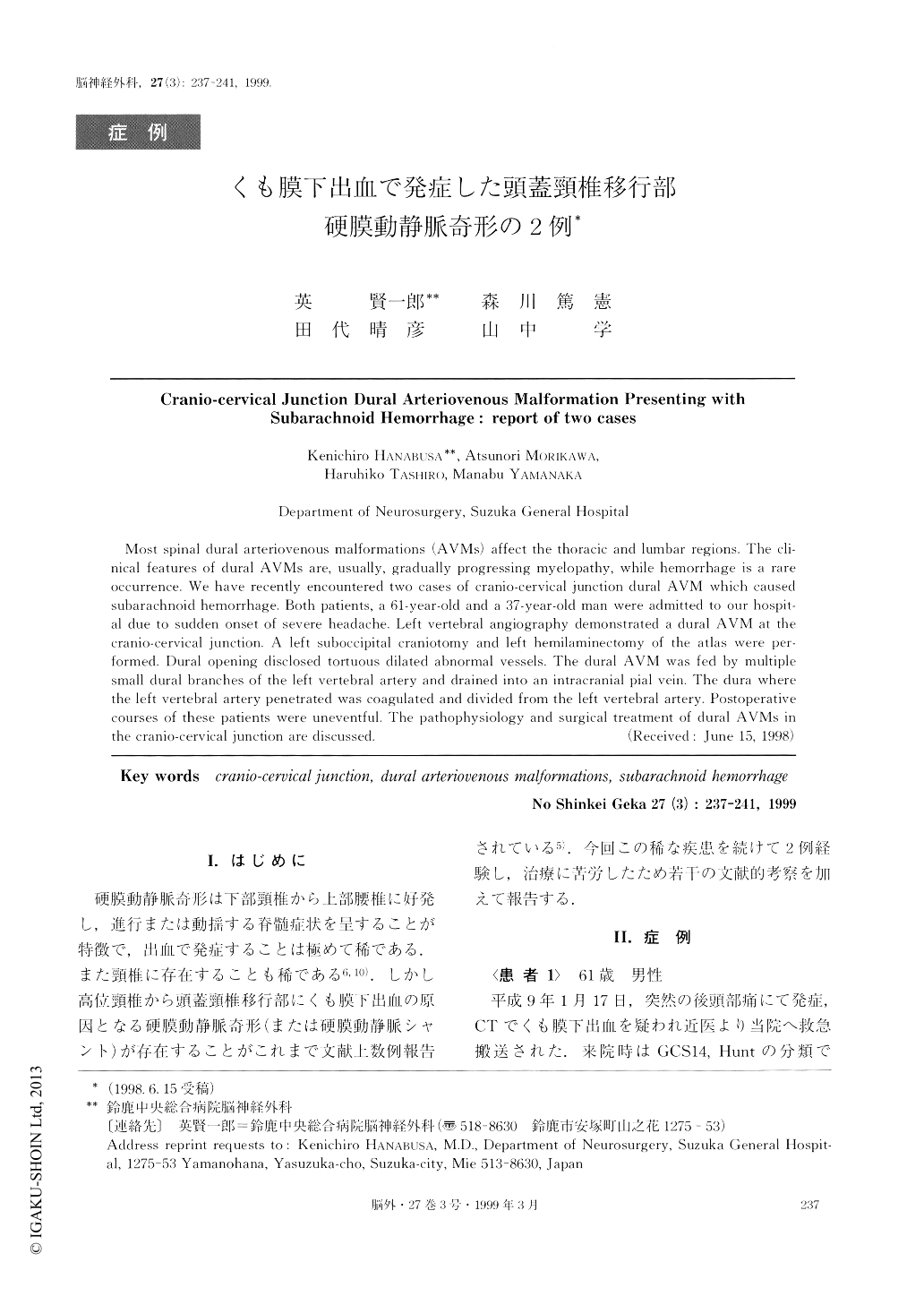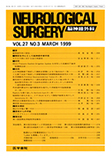Japanese
English
- 有料閲覧
- Abstract 文献概要
- 1ページ目 Look Inside
I.はじめに
硬膜動静脈奇形は下部頸椎から上部腰椎に好発し,進行または動揺する脊髄症状を呈することが特徴で,出血で発症することは極めて稀である.また頸椎に存在することも稀である6,10).しかし高位頸椎から頭蓋頸椎移行部にくも膜下出血の原因となる硬膜動静脈奇形(または硬膜動静脈シャント)が存在することがこれまで文献上数例報告されている5).今回この稀な疾患を続けて2例経験し,治療に苦労したため若干の文献的考察を加えて報告する.
Most spinal dural arteriovenous malformations (AVMs) affect the thoracic and lumbar regions. The cli-nieal features of dural AVMs are, usually, gradually progressing myelopathy, while hemorrhage is a rareoccurrence. We have recently encountered two cases of cranio-cervical junction chiral AVM which causedsubarachnoid hemorrhage. Both patients, a 61-year-old and a 37-year-old man were admitted to our hospit-al due to sudden onset of severe headache. Left vertebral angiography demonstrated a dural AVM at thecranio-cervical junction. A left suboccipital craniotomy and left hemilaminectomy of the atlas were per-formed. Dural opening disclosed tortuous dilated abnormal vessels. The dural AVM was fed by multiplesmall dural branches of the left vertebral artery and drained into an intracranial pial vein. The dura wherethe left vertebral artery penetrated was coagulated and divided from the left vertebral artery. Postoperativecourses of these patients were uneventful. The pathophysiology and surgical treatment of dural AVMs inthe cranio-cervical junction are discussed.

Copyright © 1999, Igaku-Shoin Ltd. All rights reserved.


